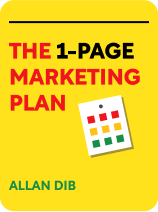

This article is an excerpt from the Shortform book guide to "The 1-Page Marketing Plan" by Allan Dib. Shortform has the world's best summaries and analyses of books you should be reading.
Like this article? Sign up for a free trial here .
What is the importance of email marketing? What are some things you should consider when designing a marketing campaign for your business?
In The 1-Page Marketing Plan, marketing expert Allan Dib emphasizes the importance of email marketing, especially for small businesses. Email marketing is an easy and cost-effective way to reach your prospects and existing customers.
Find out the importance of email marketing below.
What Is the Importance of Email Marketing?
Email marketing is important for small businesses because it is cost-effective.
Email is an inexpensive, direct, personal way to reach prospects and customers, which also can be automated. Dib notes that with email, you can:
- Capture the email addresses of website visitors with an email opt-in form; those not ready to buy but interested in more information are future customers you can nurture.
- Develop relationships with your customers (so your email database grows in value).
- Test and launch new products and services.
- Generate instant cash—create a compelling offer with a response mechanism, send an email to your list, and you’ll get an immediate response.
Now you know the importance of email marketing, here’s how you can implement an effective email marketing strategy:
Dib recommends using a commercial email marketing system such as MailChimp, ConvertKit, or ActiveCampaign (rather than trying to send mass emails via Outlook or Google mail). They meet compliance standards and work to improve delivery. Also, they automate sending.
| How to Create an Email Campaign According to marketing strategists, key questions to answer when planning an email campaign include: 1. Identify the outcome you want. 2. Identify a niche target. 3. Determine what matters to these prospects and how you’ll address it (what value you provide). 4. Decide on a timeline for the campaign. 5. Plan your emails and follow-ups. 6. Write subject lines that compel clicks (by promising value and personalizing). 7. Include a strong call to action. 8. Provide a way for recipients to opt-out. 9. Test your email on multiple devices to make sure it looks right. 10. Track your metrics. Here’s a planning template for email marketing plus examples of successful campaigns. |
Snail Mail
Despite the importance of email marketing, Dib also recommends that regular or snail mail also be a part of your marketing strategy. Direct mail works as a marketing medium because:
- People connect emotionally with physical things. Unlike emails, people save USPS letters and cards.
- Direct mail has a longer shelf life and takes more effort to dispose of than email—which can immediately be deleted and forgotten.
- Postal mailboxes are becoming less cluttered (allowing your message to stand out), while email inboxes overflow despite many sorting methods.
The key to messaging is to use a mix of media appropriate to the prospects you want to reach, avoid relying too much on any one channel like social media to generate leads, and track the ROI.
(Shortform note: Surveys continue to show that direct mail has a higher response rate than email (4.4% versus 1.12%, according to the Direct Marketing Association). A study by The NPD Group Inc. found that 30% of recipients read email and 16% took action, compared with 47% who read direct mail and 27% who bought something as a result. Specifically, 44% of millennials in a Valassis survey said snail mail is their preferred way to receive offers, while slightly fewer—40%—cited mobile; this underscores the value of using a blend of tactics, including direct mail.)
Understanding the importance of email marketing is just one piece of the puzzle—what matters the most is putting it into practice.

———End of Preview———
Like what you just read? Read the rest of the world's best book summary and analysis of Allan Dib's "The 1-Page Marketing Plan" at Shortform .
Here's what you'll find in our full The 1-Page Marketing Plan summary :
- How to create a marketing plan using a simple template
- A guide to the three customer-focused phases of marketing
- How to create enthusiastic superfans—and why they're essential






